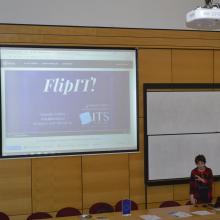Results

As the final outcome of the project, an English, a Spanish and a Hungarian e-book was created, titled Innovating Vocational Education - Flipped Classroom in Practice. All 3 versions are based on the online course content, however the Spanish and Hungarian versions have been extended with experiences of the pilot teacher training course.

The number of teachers involved in the online course exceeded original expectations, teachers were very much interested to take part in the experiment.

The graphical design was the first thing we accomplished. Then we designed the online platform, adding elements in support of the expected learning outcomes. We added a forum, module objectives, intro video, learning instructions, e-books with the learning content, optional exercises and mandatory, credited assignments to each module. We also created a video repository as well as a database of Open Educational resources.

In this phase of the project the course components were defined and designed. Partners collaboratively developed digital learning objects for the 3 modules, which were then implemented in the platform. The source version was created in English, and then the content was translated to the other 3 languages, also leaving space for localization (e.g. there are applications that are only available in one specific language).

The Flipped Classroom Syllabus was prepared, including three modules with detailed definition of learning objectives, topics, learning outcomes and skills to be developed.
The aim of the first module is to provide theoretical background on flipped classroom method. It helps teachers to identify its pedagogical concept and innovative features, and to evaluate its value against the traditional, frontal teaching methods. This module enables them to develop the first idea to apply FC in their teaching environment.

The aim of Intellectual Outcome 1 was a comprehensive review of the present state-of-art and experiences in using flipped classroom methods in the partner countries, and to design and carry out a survey with VET teachers, in order to define the training needs as an input for the curriculum and course design.













